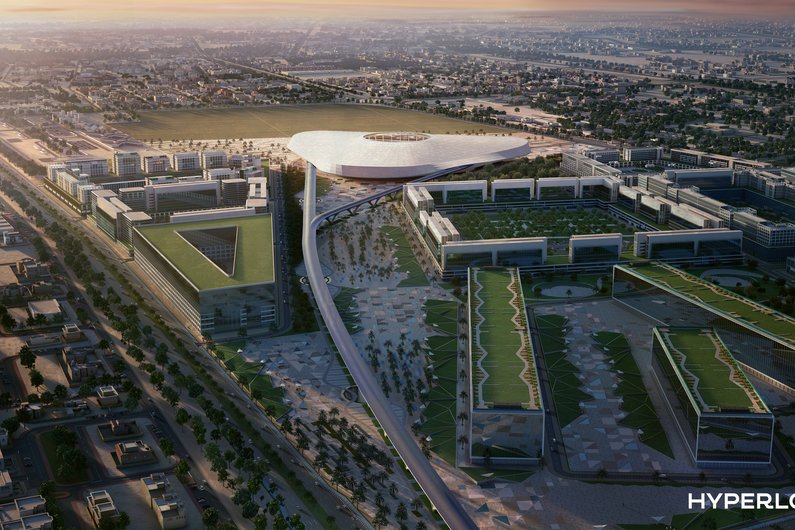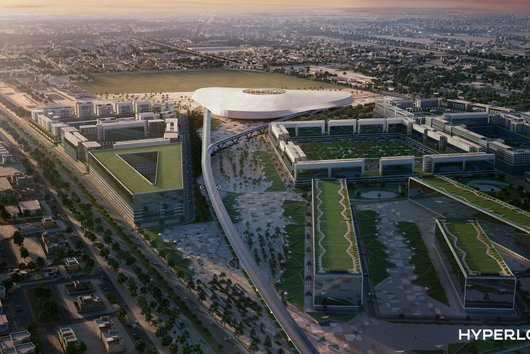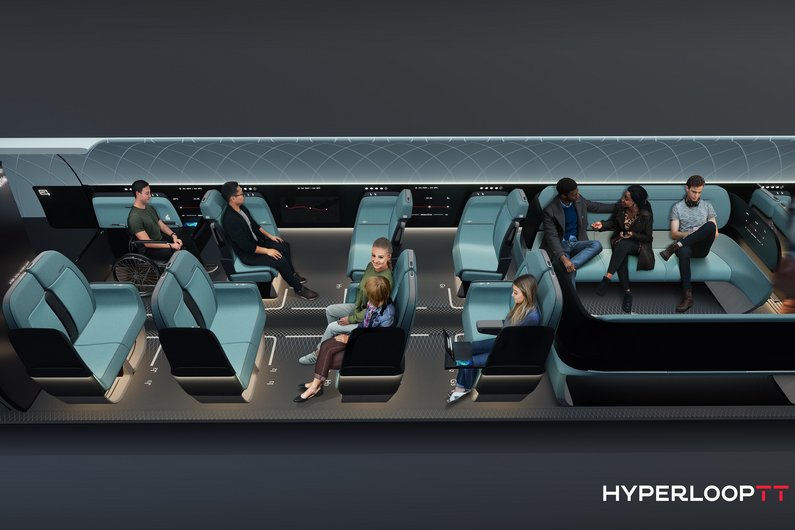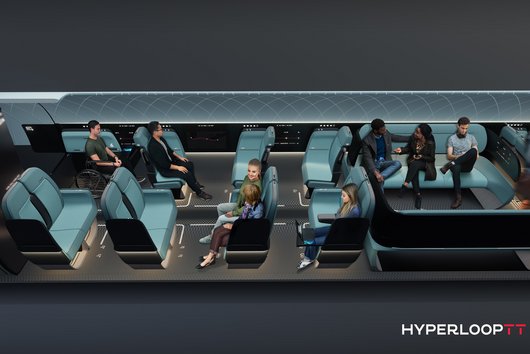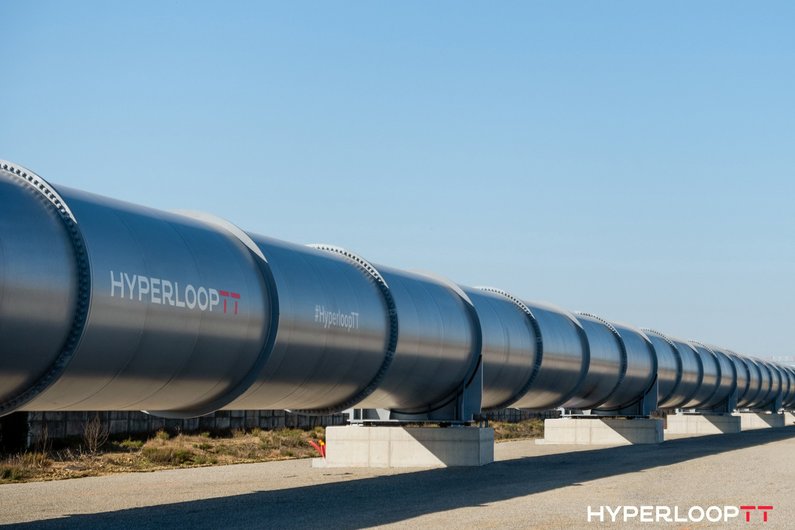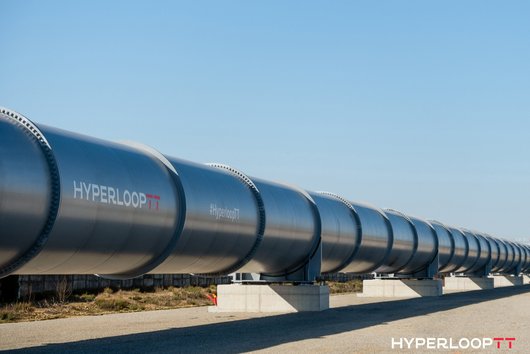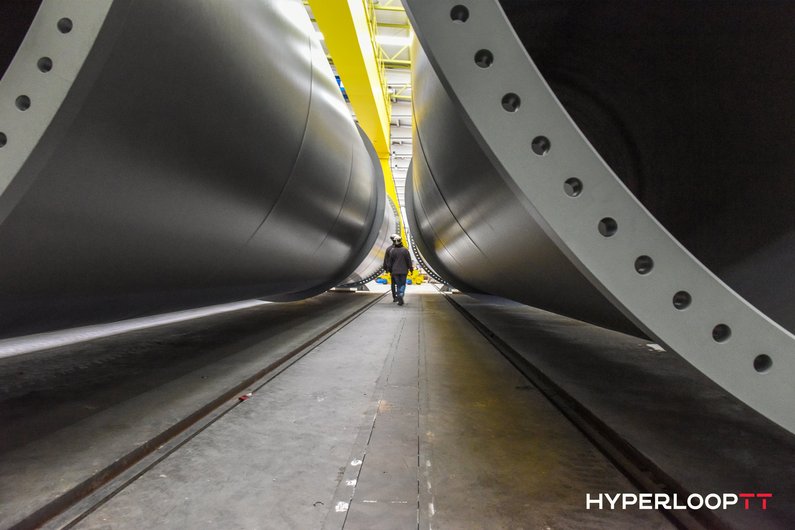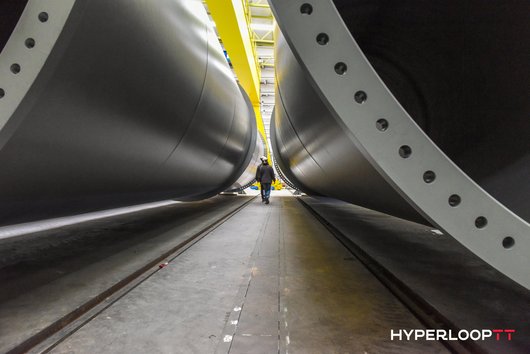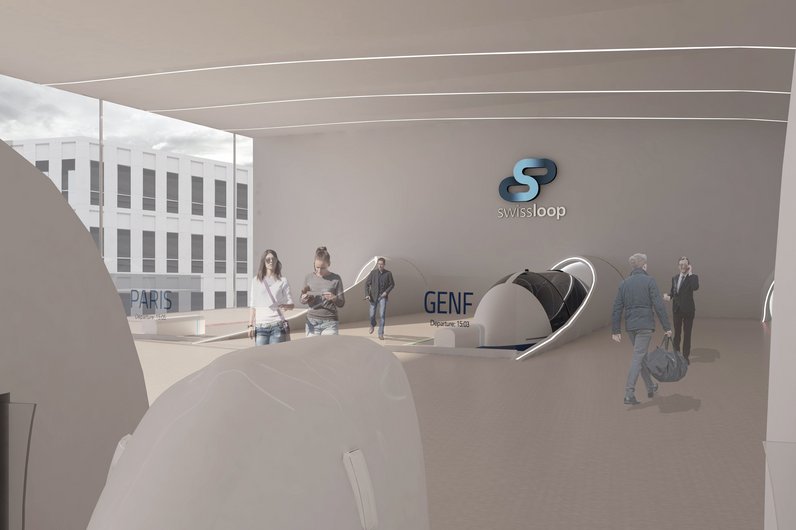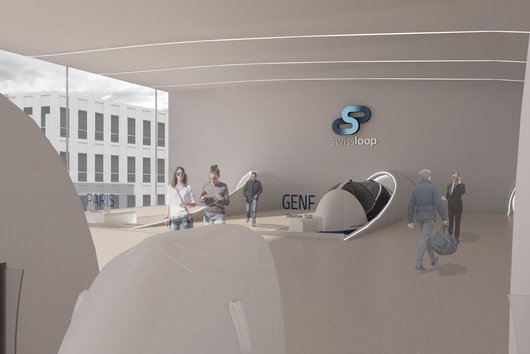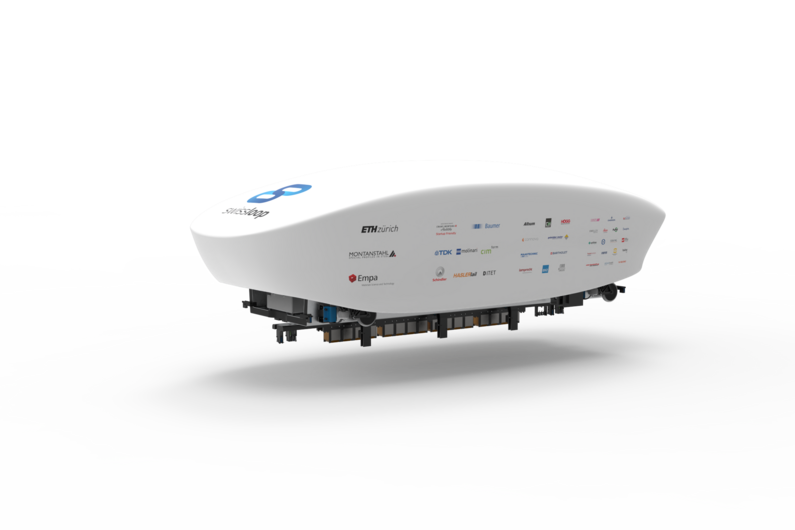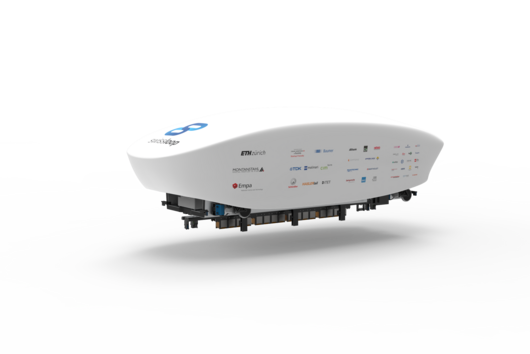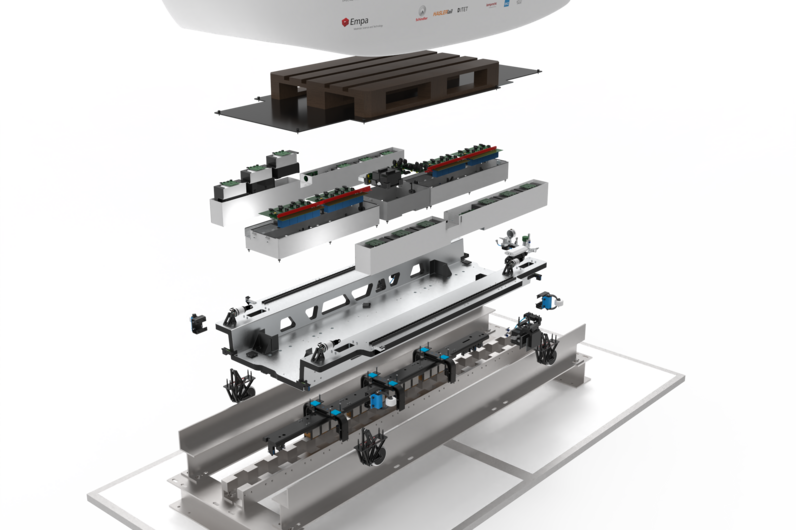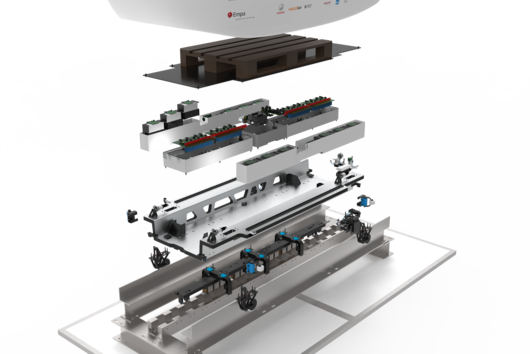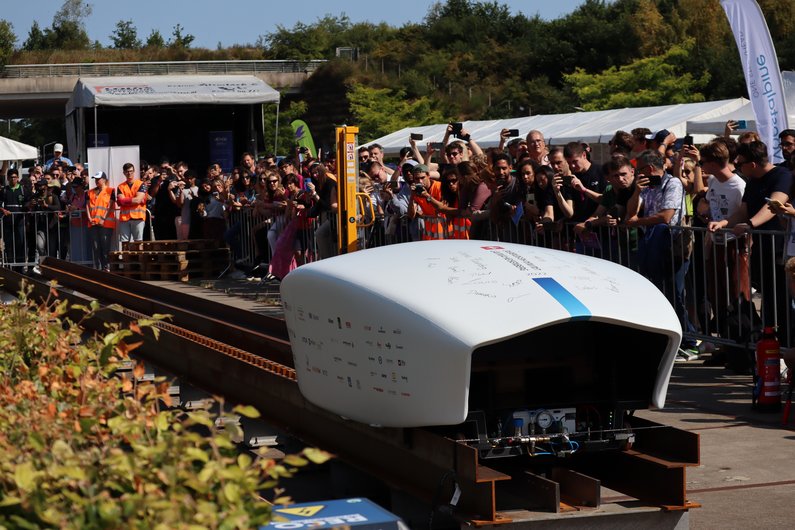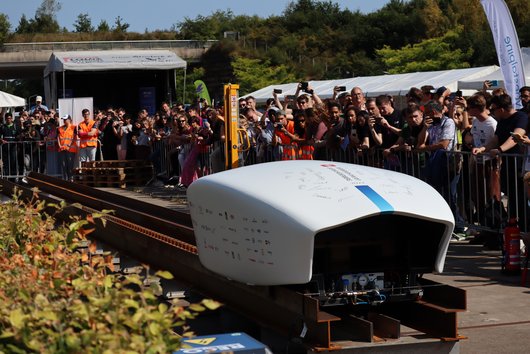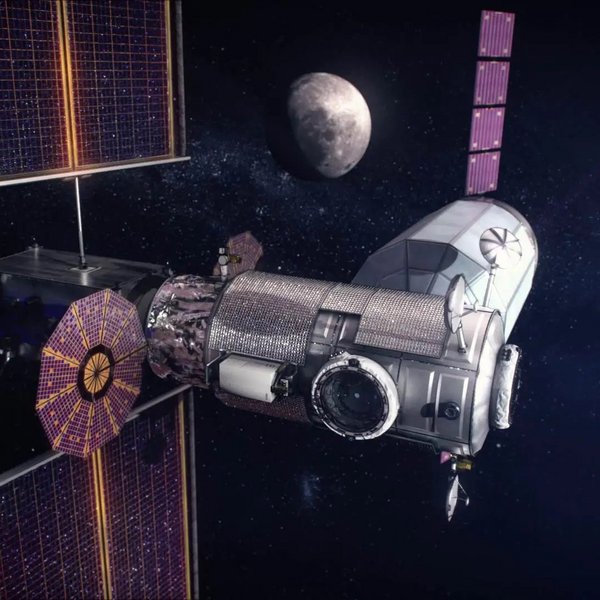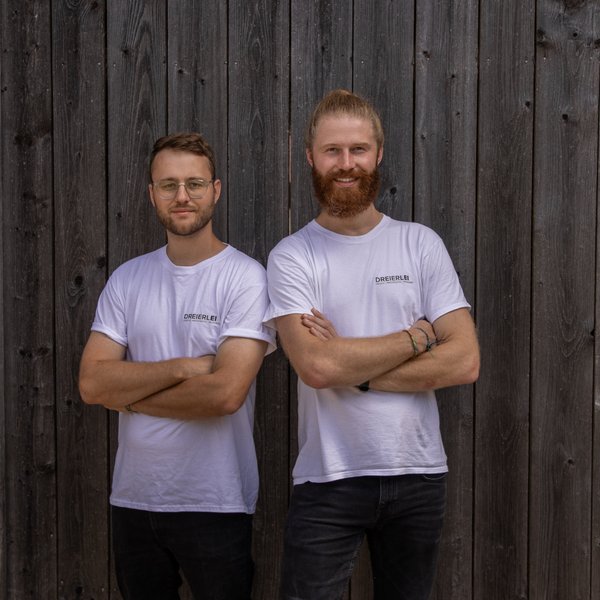
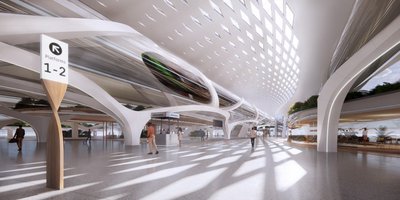
The Hyperloop Hype
The news about the Hyperloop never stops: Europe's first certified Hyperloop test track on a scale of 1:1 has already been completed. The technology company Hardt Hyperloop has secured EUR 12 million in investments aimed at completing the European Hyperloop Centre, or EHC, and the Hardt test vehicle. But does the Hyperloop transport system, spurred by the competition initiated by PayPal, Tesla and SpaceX co-founder Elon Musk ten years ago, really have potential? Does the hyper-fast transport of passengers and goods in the vacuum tube make sense economically? And what about the technical feasibility? In any case, hyperloops would make two-thirds of air traffic within Europe superfluous. At least one fifth of goods transport by truck would be obsolete. This is how hopeful it sounds on the website of the Dutch Hyperloop Development Program, HDP. There you can also read about the estimated costs: just under EUR 1,000 billion. So is all of this pie in the sky or already more? According to the experts at HDP, a first route for freight transport or a system on a smaller scale could start operations as early as 2029. There are obviously technical challenges in realising the Hyperloop idea, but there are also political ones. Not the former but the latter predominate, says Swissloop. After all, the realisation of such a network requires the cooperation of several states as well as the financial cooperation of governments.
Transport experts remain sceptical
The focus project, founded in 2016, emerged in the wake of Musk's Hyperloop white paper and the subsequent open source competition. It is only logical that Switzerland is on fire for its project. However: in an international survey conducted the previous year, transport experts expressed criticism. The initiator of the survey was the International Maglev Board, a scientific non-profit organisation, in cooperation with the Technical University of Deggendorf. A total of 1,036 people from 48 countries took part. But let's take it one step at a time: The idea of the pneumatic tube train fascinates and sparks the imagination of scientists and laymen alike. And not just since Elon Musk. "The idea of transporting goods in air-reduced tubes has been around for 150 years," says Johannes Klühspies, professor at the THD Faculty of Applied Sciences. Today, various projects and constellations are working and researching on the Hyperloop - in the USA as well as in China, in Europe as well as in the United Arab Emirates. Hyperloop technology initially requires three things: tubes, cabin capsules and terminals. The idea behind it: The capsules or pods with people or goods shoot through a tube at very high speed - around 1,000 km/h - in which there is largely a vacuum. Solar panels could be mounted on the tubes. But for the high-speed transport system to really work, it needs much more. The pods move largely free of air resistance and friction thanks to a magnetic drive inside the tubes. As with all maglev systems, a completely new infrastructure would be required. It is thus already clear that hyperloops would be geared to demand rather than running according to a fixed timetable.
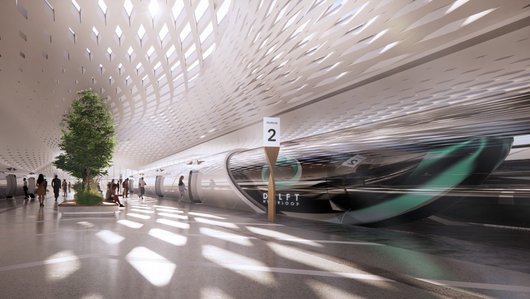

Big challenges for small countries
Because of the low air resistance, the energy input should be much lower than for other means of transport, according to the many research teams. The propulsion system is similar to the Transrapid magnetic levitation train developed by Siemens and ThyssenKrupp. Until recently, a 1.6-kilometre-long strip on SpaceX's company premises in Hawthorne, California, served as a test track. However, the SpaceX tube has since been dismantled. In Switzerland, in Collombey-Muraz, the longest test track, the AlphaTube, is currently being built at 3.1 kilometres. Swissloop specialises in the design of pods, while Swissloop Tunneling, also student-run, is researching tunnel solutions. The third in the cluster is Eurotube in Zurich - as the name suggests, this is all about infrastructure and tubes, with Eurotube cooperating with the SBB. The length has been calculated so that high-speed vehicles can be tested at up to 900 km/h - safe acceleration and braking would be guaranteed.
If a network of Hyperloop trains were to criss-cross the whole of Europe, small countries like Austria and Switzerland would undoubtedly be "right in the middle of it", as Julie Schmitt from Swissloop puts it: "There would be stations in Zurich, Geneva or Bern". The network could connect 130 European cities over a total of around 25,000 kilometres. However, Austria, Switzerland and other European countries face topographical and, with their high population density, demographic challenges. In any case, the route Berlin-Zurich would be possible in 30 minutes - with the ICE it takes four and a half hours so far. The nations of the USA, China or Russia are more likely to benefit from the distances necessary for speed developments, and in the case of China, the population potential would also be there to be served. Schmitt is convinced "that a functioning Hyperloop system on a country level is conceivable in about 15 to 20 years in the USA and the UAE." In countries such as Switzerland or Austria, it is more likely to take 30 years. Swissloop assumes that although the installations would be costly, maintenance and operating costs would be comparatively low. In some models, tubes are built on supports instead of lying directly on the ground - this would also make construction cheaper. Other concepts favour underground solutions, as these tunnels are more resilient to weather and other hazards on the surface. In any case, Musk calculated in his white paper, according to the Swissloop experts, that a hyperloop system would be profitable in 30 to 40 years.
Useful for refrigerated goods and medicines
Goods and commodities could be transported over long distances very quickly and thus relatively cheaply, the proponents say. This would be particularly beneficial for refrigerated goods or medicines that have to get from A to B quickly. Research groups on the topic also exist in the Netherlands, China and the USA. In Spain, the deep-tech company Zeleros has already conducted trials with the steel and mining group ArcelorMittal on the way to a "scalable ultra-high-speed mobility solution" to analyse the behaviour of steel grades for optimal use in hyperloops. To develop an "emission-free propulsion system", Zeleros has teamed up with ITP Aero. The Spanish and Swiss experts see sustainability as a given, as the electric motors would be battery-powered, causing no direct carbon emissions, and would be additionally powered by the movement of the turbines. "Due to the vacuum, the capsule only needs energy to be pushed and slowed down again." During the journey, only the electromagnetic levitation systems and motors would have an impact. The propulsion system is protected from external influences such as snow, sand, bird strikes and other environmental factors. Construction and maintenance are therefore seen as rather uncomplicated and inexpensive.
Question marks regarding costs and safety
The results of the survey cited at the beginning of this article, however, speak a different language. They suggest that hyper-fast travel would remain a minority programme in the near future or would not be implemented at all: The respondents estimated the investments required for the infrastructure as very high and the operation as very costly. They also feared safety risks in passenger transport. They also questioned how a Hyperloop would be connected to existing transport systems. "Austria and even Germany are much too small to operate such transport systems in a meaningful way," says Klühspies, who is also president of the International Maglev Board. Since you need a certain amount of time to accelerate and the same amount of time to decelerate again, you would hardly have any travel time gain for short distances. In addition, one has to be able to guarantee the airless space - and the oxygen supply for the passengers. The maintenance, servicing and security costs are grossly underestimated. Over several thousand kilometres, the operators would have to guarantee that there would be no air or water ingress and that there would be no corrosion. But uneven solar radiation alone affects the material of the tubes. The underground as an alternative would again be extremely cost-intensive.
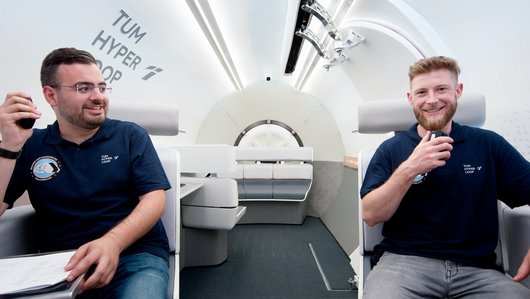

In terms of time, extremely long safety intervals would also be needed, so that the transport capacity would remain low. Question marks in freight transport are the corresponding infrastructure such as distribution stations and also here - as in passenger transport - the challenge that the vehicles have to change from a pressurised environment to a vacuum. Klühspies' conclusion: "Technically feasible - but questionable from an operational and economic point of view." Actually, he says, it is about something else, namely exploring a wide variety of technologies that result from working on this concept. The main effect, he says, is the gain in knowledge, especially in the areas of magnetic levitation and contact-free energy transmission.

